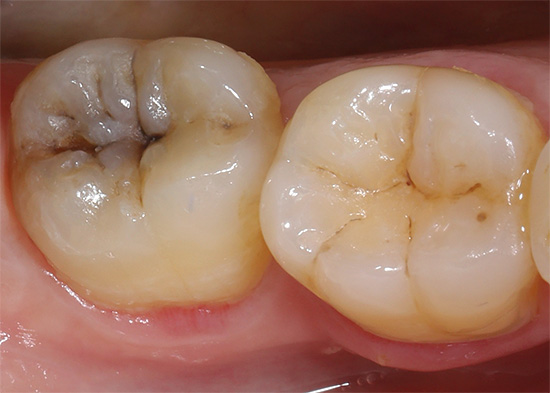
In acute inflammation of the so-called dental "nerve" (pulp) as a result of infection in the closed pulp chamber from the carious cavity, the acute form of pulpitis is diagnosed.
In turn, acute pulpitis, as a disease, is divided into two forms: focal and diffuse. Focal pulpitis is also called serous, as it appears as the initial stage of acute inflammation of the neurovascular bundle inside the tooth, which is accompanied by the accumulation of serous fluid in the channels. In fact, this is the result of the body's immune response to the invasion of bacteria in a previously sterile pulp chamber.
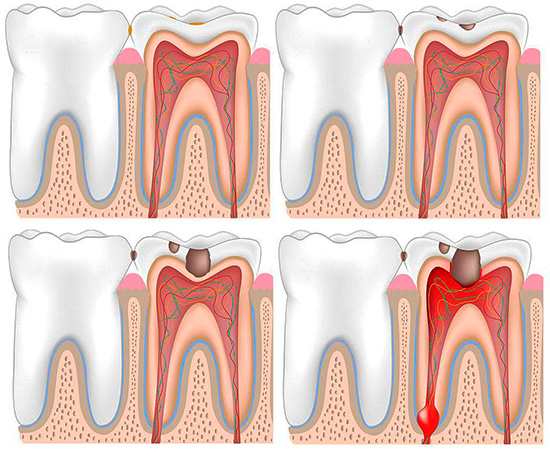
As the immune response intensifies, purulent exudate begins to accumulate in the channels - the result of the death of leukocytes and pathogenic bacteria. As a result, purulent pulpitis develops (also called acute diffuse pulpitis), which causes a person severe pain.
In most cases, the pulp chamber has no communication with the cavity, that is, it is closed hermetically, therefore, the fluid accumulating inside the tooth begins to literally squeeze the "nerve". This not only leads to the appearance of severe pain, but, in addition, acute purulent pulpitis often manifests itself with symptoms that make it difficult to diagnose and subsequent treatment in the dentist's office.
There are times when a doctor simply cannot find a bad tooth and does not know which one to treat - as a result, healthy innocent teeth are treated one by one. And, unfortunately, in such an unpleasant situation, any person with pronounced symptoms of purulent pulpitis can now get into.
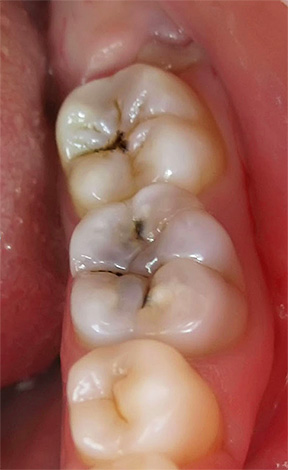
In order not to be among such "lucky ones", let's get to know the problem in more detail and consider it, so to speak, from all its angles ...
Why is purulent (diffuse) pulpitis sometimes so difficult to find a bad tooth
The first and perhaps most important aspect of the problem is the difficulty in determining a diseased tooth by a dentist. And here the patient may have a very reasonable question: why a doctor who has been studying his profession for more than 5 years cannot find an ordinary, seemingly pulp tooth, which is terribly painful and requires immediate treatment?
The fact is that of the acute forms of pulpitis, purulent (diffuse) is the most unpredictable. Most people with this diagnosis come to the doctor complaining that "everything hurts." There is such severe pain that it becomes difficult to point to a diseased tooth.
The photo below shows an example of how the dentition looks, in which one of the teeth is affected by purulent pulpitis. However, which one? ..
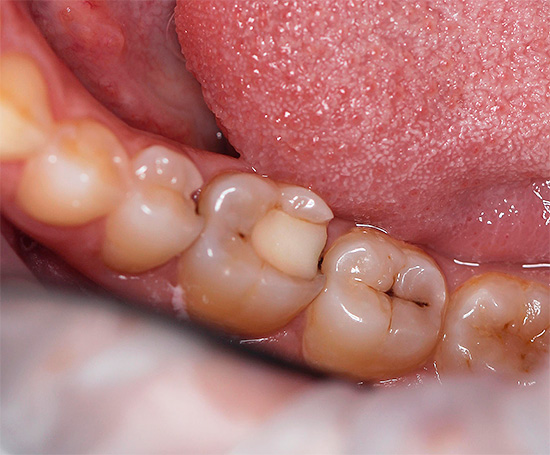
Why are there such difficulties in the diagnosis? The fact is that, as noted above, the accumulation of purulent exudate leads to strong compression of the sensitive pulp tissue between the walls of the channels. Impulses along nerve fibers are transmitted to the brain, responding to pain. At some point, the signals from the squeezed tissue of the “nerve” become so intense that the pain begins to “shoot” along the branches of the trigeminal nerve, in other words - at different areas of the maxillofacial region (the ear, part of the face, head, and throat can sometimes hurt) .
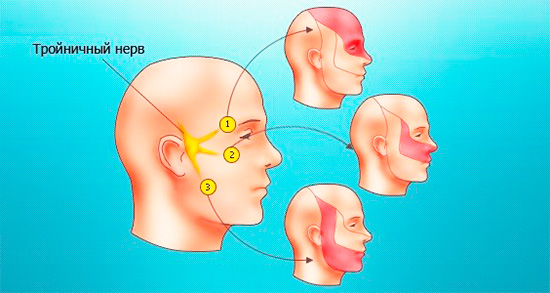
Case from the practice of a dentist
When I worked 5 years ago in Ryazan, a patient (37 years old) came to me with an acute tooth pain that had been tormenting her for 5 days, but on the day of the visit she became so intolerant that there was no longer any chance to wait any longer. I’ve also seen cases when a patient points to a healthy tooth, but you’re treating carious cavity and you always guess, but it was completely different.
The woman complained of a sharp pain in the tooth, which “gives” to the head. In this case, both the upper and lower jaw hurt, and the patient pointed to the upper tooth on the right, although I did not find signs of at least one damaged tooth in this area. Since there was a filling on the last right upper tooth, I started from it: I removed the nerve from the canals and filled them in the first visit.
The next time the woman came with previous sharp pains. At the same time, she urgently required me to cure a nearby tooth, since she would not tolerate another “night with her circles of hell”. After the treatment of the canals, the next appointment was prescribed, but it would be better if I didn’t come to him, as the woman, exhausted by severe pain in the tooth, rushed at me with almost fists. I had to reassure her for a long time: she no longer believed in the success of the new upcoming procedure.
After a detailed examination of all the teeth in the lower jaw on the left, a decay-affected wisdom tooth (eighth) was found. The woman continued to insist that the pain in the upper teeth has intensified lately, but she allowed me to anesthetize at least treat the carious cavity in the wisdom tooth and put arsenic paste on it to devitalize the “nerve”. The very next day, she brought me a bunch of gifts for the fact that the pain completely disappeared: neither my head nor my jaw reminded me of myself.
So for the first time I came across one of the most difficult to diagnose tooth diseases - acute purulent pulpitis (diffuse). The result of this was the useless treatment of two innocent teeth.
In the future, more than once I had to deal with similar cases, however, even taking into account my previous experience, teeth were not always found, standing somewhere far from the place indicated by the patient. There were cases when all the teeth in the row turned out to be whole and (or) with fillings, and again I had to find a pulpitis tooth using the scientific “poke” method, since we could only dream of modern diagnostic methods and devices in our clinic ...
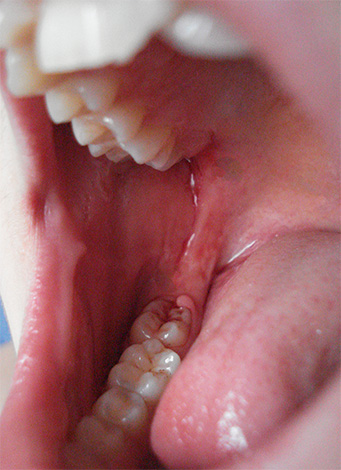
Symptoms of acute purulent pulpitis
Comparing the medical history of acute serous (focal) and acute purulent pulpitis (diffuse), you can find only a slight similarity, for example: in both cases, acute paroxysmal pain that can occur without irritant and intensifies at night. With both of these acute forms of pulpitis, almost any irritant (sweet, hot) can cause symptoms long-lasting pain in the tooth, despite the elimination of the irritant. However, with acute serous pulpitis, seizures usually do not last long (no more than 20 minutes), and with purulent - they can last for hours.
Acute focal pulpitis lasts no more than 2 days, passing into the purulent phase of acute diffuse pulpitis, which lasts up to 2 weeks. The dentist easily carries out the differential diagnosis of these two forms of acute pulpitis on the basis of only one symptom - the ability to accurately determine a diseased tooth:
- if the patient easily indicates a tooth disturbing him, this is a serous form of pulpitis;
- if the patient finds it difficult to say exactly where the pain is localized, and complains of prolonged seizures that give out (radiating) to the maxillofacial region and the head region, then this is most likely a purulent phase of pulpitis.
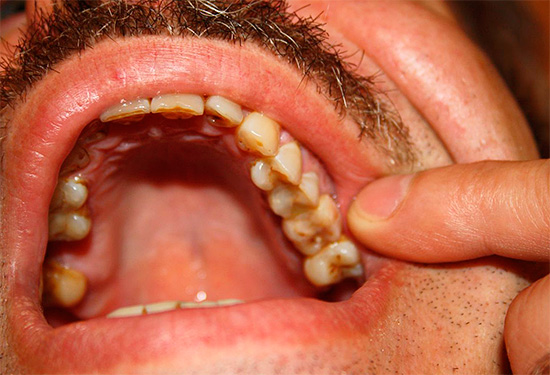
From the upper teeth, the pain “shoots” into the region of the temple, the superciliary and cheekbones, as well as into the teeth of the lower jaw. With diffuse pulpitis on the lower jaw, the pain “gives” to the back of the head, to the submandibular part, sometimes to the temple and teeth of the upper jaw. With purulent pulpitis of the front teeth, the symptom of pain radiating creates sensations of “diseased teeth” on the opposite side of the jaw.
Feedback
Literally that week, I turned to the dentist with severe bouts of pain in the lower molar that could not be tolerated. In general, I am not a fan of going to doctors, especially not visiting a dentist, but on the third day from the onset of the first symptoms in the tooth, something began that could not be expressed in words.
If on the eve I knew exactly where it hurts and what hurts, then on that ill-fated day I had to drink pills in handfuls, since the damned pain went beyond the jaw and began to “pierce” me in the back of the head, then the whole jaw, then the upper teeth. When I could no longer endure this nightmare, I literally ran to the doctor. It’s good that I even remembered where it all came from and pointed to the doctor that tooth that started to hurt a couple of days ago on its own. But it was the case that my friend mistakenly removed the wrong tooth. This is only because he, like me, had pains everywhere, and the gear trainer did not take long to figure out: where he was shown, he pulled.
And I just removed the nerve and put a seal. Now all is well. I hope that there will no longer be such a nightmare.
Innocent, Oryol
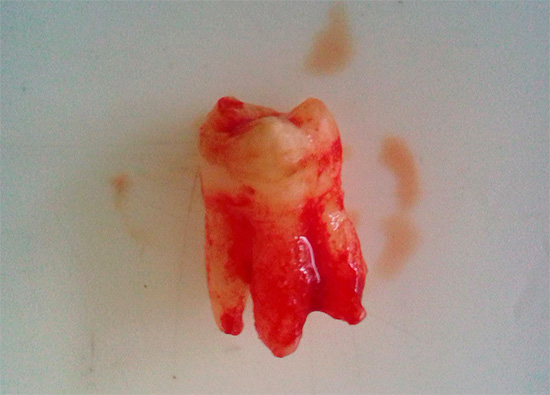
Modern methods of treating purulent pulpitis
It’s rare for anyone to endure acute pain with purulent pulpitis for a long time - usually after a couple of days of torment everyone begins to understand that without the help of a dentist painkillers he can not do. And the sooner such an understanding comes, the better, because this acute form of pulpitis is successfully and easily treated if modern methods and approaches are used.
Dentist Comment
If someone is still embarrassed by the word “purulent” in combination with pulpitis, then I hasten to please the fact that the contents of the root canals at this stage of the disease fill a completely lively and “moderately well-fed” nerve. And the very pus that should flow out of the canal is a slightly different story regarding another disease.
The main thing is to understand the difference: in acute purulent pulpitis, the living pulp (tissue) is surrounded by a fluid that is hardly visible (with rare exceptions), and in acute purulent periodontitis, the “nerve” has long died and decomposed enough to cause one or more drops of pus from the hole to open the pulp chamber .
So it’s better to treat a still living tooth with acute pulpitis, until so much pus has accumulated in it that an innocent gum can be chosen as a reservoir, which will swell.
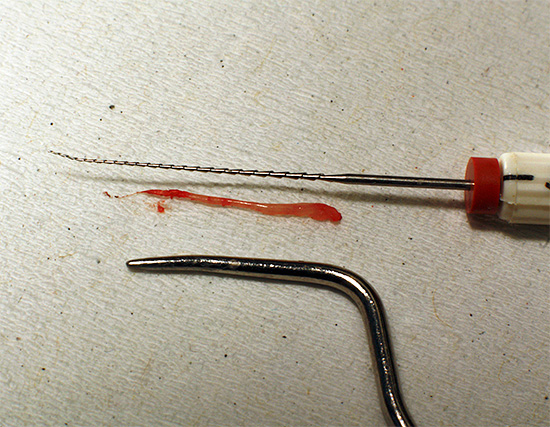
Treatment of acute serous (focal) pulpitis can be carried out by the biological method with the protection of the entire pulp in a viable state, but in dentistry of different levels almost always resort to removal of pulp from the channels, their subsequent washing and sealing. This, on the one hand, is simpler (the doctor does not need to specify the stage of “inflammation” of the pulp and conduct complex diagnostics), and on the other hand, it is safer for the patient’s health and more profitable for his pocket. The financial aspects of the treatment of acute pulpitis will be described in detail below.
Acute purulent pulpitis is treated with common methods of vital and devital extirpation. Devital extirpation involves placing on the first visit a devitalizing paste on the tooth, which kills the “nerve” in a few days.
In the photo - the "nerve" removed from the tooth:
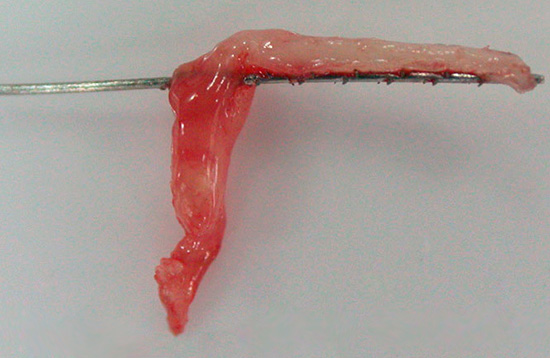
This method scares off some people with the scary word “arsenic”, but in fact in the hands of a professional arsenic paste does not lead to those terrible consequences that are legendary among the people: severe pain, tooth decay a few months before the base, gum burns, etc. d. However, those same professionals have long switched to alternative pastes that do not contain arsenic anhydride.
Moreover, in the treatment of acute pulpitis, the vital extirpation of the pulp is often preferred, when the neurovascular bundle does not need to be pre-euthanized:
- Solid local anesthesia is made with a domestic or imported (more often) anesthetic;
- The pulp chamber is opened, the coronal part of the “nerve” is amputated and the root extirpation (extraction) is performed;
- Channels are washed with effective antiseptics (sodium hypochlorite, hydrogen peroxide, chlorhexidine, etc.);
- Then the canals expand to the size and taper that is required for the future “root filling”;
- At the next stage of treatment, the channels are sealed to a physiological narrowing (apex), that is, before reaching the radiological tip. The choice of material for filling the canal is a creative approach of each doctor, based on the clinical experience, clinical situation during work, the financial capabilities of the client and other factors.
- Temporary restoration or imposition of a temporary seal. In some cases, this stage is omitted, and a permanent filling is immediately applied, although there is still debate on the issue of the advisability of simultaneously recovering a tooth immediately after intracanal treatment.
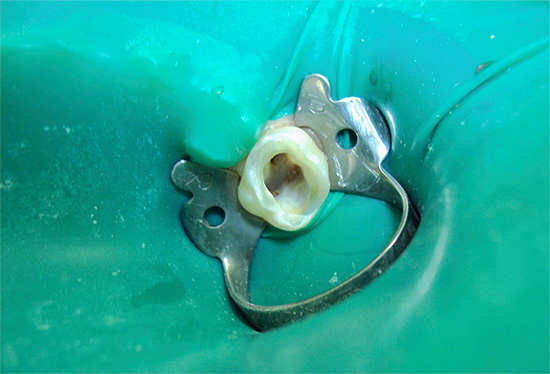
Why it is impossible to treat purulent pulpitis with folk remedies
The answer is simple: because such treatment is highly likely to lead to tooth loss. Our ancestors well understood that it is far from always possible to save a person from suffering with the help of lotions and conspiracies.
Although there were many cases when, after using traditional medicine, a decaying tooth never again made itself felt and rotted to the root, which gradually began to loosen and fell out no worse than a milk tooth.
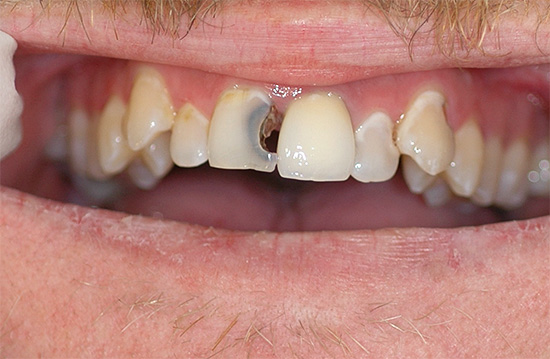
Dentist Opinion
Many doctors are interested in the riddle of prayers and some folk remedies for toothache: why sometimes conspiracies of grandmothers really help to relieve pain, what happens to the tooth at this moment and how long it will not manifest itself again.
In my opinion, similar methods of alternative medicine are associated with the transition of the acute process into chronic form, and the latter often proceeds without symptoms of acute pulpitis, which has a beneficial effect on the emotional state of a person. It's nice when the tooth does not hurt, even if it starts to crumble slowly.
Therefore, there are still old women who cunningly smile when talking to the dentist, and pass on their gift from generation to generation, flaunting, however, at the same time rotting little roots that in the dead state feel generally excellent. It seems to me that for modern society, decaying teeth that do not hurt are at least wild.

Dentists offer a good solution in this situation: do not treat acute pulpitis with alternative methods, hoping for true healing, but only temporarily get rid of the pain with available painkillers, when it is difficult to get to the doctor in the near future.
It is important to understand that a timely visit to a professional dentist for help saved a lot of teeth from the surgeon's forceps. In addition, cases are recorded every year when, without special help from a dentist, people simply died from an odontogenic infection. It can spread throughout the body, resulting in sepsis (blood poisoning) or, for example, odontogenic mediastinitis (inflammation of the mediastinum).
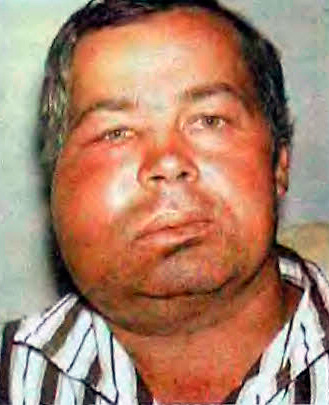
Sometimes severe complications are only the result of undue delay and treatment of acute pulpitis with alternative methods that did not help. Conspiracies, propolis, garlic or beets are not always as effective as some traditional healers position them ...
When treating purulent pulpitis can empty your wallet
In a private clinic, it is most often profitable for a doctor to treat tooth canals with any form of pulpitis, since treatment of each channel is charged separately. If the pulp is kept in a viable state, the dentist cannot take advantage of all the delights of the numerous price list items,and in addition, if the diagnosis and technique of this method of treatment are not carried out correctly, the patient will also get complications in the form of repeated pains and screams: “Return my money!”

In general, acute purulent pulpitis has symptoms that allow not the most conscientious doctors in private clinics to treat canals in many teeth at once, even healthy ones.
Imagine a situation: a person deals with severe acute pains, from which the whole jaw hurts. The doctor calmly finds a pulpitis tooth (the benefit of modern equipment in most private clinics makes it easy to do this), and along the way reports that next to him there is also a problem in the tooth, which in such a relationship gives such “life charms”.
The fact is that on the next tooth there can only be small carious spot, which can either be sanded, or processed and put a seal. But canal treatment costs 2-3 times more expensive, especially since at the end of intracanal treatment there is the same filling that was originally intended. Sometimes it even comes to the point that even more than 3 teeth are subjected to intracanal treatment at once, and the cause is an acute purulent pulpitis of one tooth and the uncontrolled desire of a private dentist (often not from a good life) to earn an extra piece of bread for himself and his family.
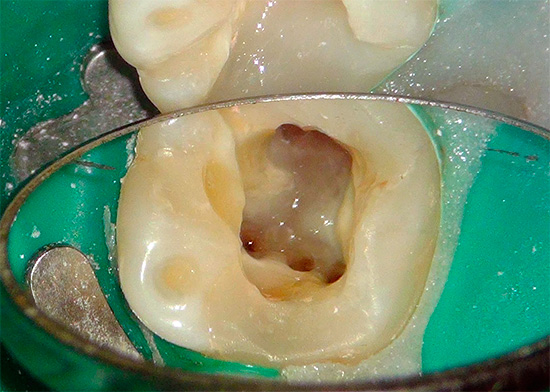
What can you do when the prices for canal treatment for pulpitis and periodontitis in private clinics grow steadily every year, and high-quality intra-channel, albeit useless for this tooth, therapy allows you to keep the tooth for life, albeit in a dead state .
In a state institution, a “money divorce” manifests itself in a different way, but almost always it is not associated with multiple useless treatment of tooth canals, because the doctor, due to constant rush, sometimes does not even have time to do the actions required of him in this clinical situation. The result is often the retreatment of the tooth, not in the state, but in that very unfortunate private clinic. Such a vicious circle.
In order not to be mistaken with the choice of the clinic and the doctor, it is useful to initially ask friends, friends and relatives, read reviews on the sites, find out the length of work of the doctor and the degree of equipment of the clinic. And if you have already found a good doctor, then hold on to him, not allowing random dentists in random clinics to “come off” on your teeth.
Be healthy!
Interesting video: what awaits you when treating pulpitis in the clinic
Symptoms of pulpitis and why the whole face may hurt

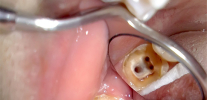
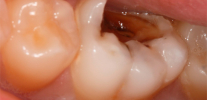
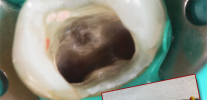
Hello. I have a specific question: tell me, if the nerve was overheated during preparation and, without noticing it, was immediately filled, then at least how long pus can develop in the tooth and outside the tooth, i.e. in the periodontium? The fact is that a brother was placed a seal a week ago without removing the pulp. Here, a week later the face was swollen. The doctor made excuses that before him someone did not completely remove the nerve. That is why the tooth is rotten.
Hello! If the tooth was treated due to caries (medium or deep), and the doctor was dealing with a “living” tooth, then we are talking about the occurrence of periodontitis. Moreover, the cause is not always due to overheating - there is also a chemical effect of the material in violation of the technique of working with it and excessive vibration when working with a bad tip. Overheating is also often the cause of pulp death, especially when working without water cooling. It is almost impossible to notice overheating of the tooth during operation.
As for the minimum time: in general, there is no such concept in such situations. I would say that, on average, the problem develops within 1-2 months, although everything is individual - it may well arise even in a few days.
I don’t know how much this justifies the doctor, but I know of many cases when dentists treat tooth decay, which in reality already has an inflammatory process in the pulp, but at the moment it’s behaving relatively calmly. Literally in a week from pulpitis, which was mistakenly treated as caries, the problem can also develop into purulent periodontitis.
If the tooth in the canal has not been treated before the doctor you mentioned, then the dentist is trying to make excuses by talking about partial removal of the nerve before it. But again, I repeat that I have cited above some nuances that do not allow us to consider the issue in such a straightforward and unambiguous way in the context of just one overheating of a carious tooth.
Hello, tell me, is it possible to cure a healthy molar around which a purulent pocket has formed? Maybe you can make an incision in the gum and treat it from there?
Hello! First you need to find out what exactly you called a "purulent pocket." If we are talking about a purulent inflammatory process due to periodontitis, then the dentist-therapist determines the tactics of a possible treatment. In the event that the "purulent pocket" is the same pathological gingival pocket with suppuration against the background of periodontitis in the acute stage or exacerbation, then the tactics should be analyzed with a periodontist. If in your area there is no such specialist, then a dental surgeon or maxillofacial surgeon is suitable. If treatment is possible, then it is carried out comprehensively: from curettage of periodontal pockets, to gum repair, splinting of teeth with mobility, selective grinding and application of pastes, ointments and gels to eliminate the microbial factor and inflammation. I'm not talking about preliminary professional oral hygiene: removing stone and plaque from all teeth. Sometimes in such teeth you have to remove the "nerve" and treat the canals - this is according to the situation.
If treatment is limited to just one incision, without conducting complex therapy, then it will be either ineffective, or just slightly delay the final fate of the tooth - removal.
Hello! They treated pulpitis, they said it could hurt for a while. Almost 2 weeks have passed, and it hurts. The doctor is on vacation, I'm waiting. Tell me, please, what could be the reason?
Hello! Pain for almost 2 weeks in a treated tooth is not the norm. However, with small errors of the doctor during the treatment of canal pains, biting pains sometimes disappear only within a month (when it comes to insignificant removal of material beyond the apex of the tooth root, most often based on epoxy resin, which is now popular as a sealer). It is possible to understand how "slightly" the sealer is derived from the picture, since this material is contrasting.
Of the complications after treating pulpitis, when a tooth hurts for a long time, the following can be noted:
1. Unfinished channel or channels;
2. Perforation of the tooth wall;
3. Significant removal of material for apex (also gutta-percha);
4. Broken tool in the channel;
5. Creating a false channel.
There are other problems. To know approximately what’s happening with your tooth, it’s important to have a couple of shots in different projections on hand.
Hello! A year ago, a wisdom tooth (sixth, lower jaw) was filled. After a while, the tooth split off along with the filling, and five days ago it started to hurt. The pain intensified, even painkillers did not help, inflammation appeared. I went to a doctor in a private clinic, and the dentist said that it was necessary to remove, because the tooth was incorrectly healed. The procedure was performed, but after a day the inflammation remained, the left lower jaw hurts, the cheek is slightly swollen. I rinse with chlorhexidine, I use the Metrogil Dent gel, as the doctor prescribed. The dentist warned that the pain would remain for some time. Tell me, how long does the inflammation last after tooth extraction and why did the pain remain?
Hello! The inflammatory process on the background of the injury usually lasts for 1-2 weeks, and all this time pain may be observed in varying degrees of severity. If we are talking about acute pain after tooth extraction, then they stop in the first days with analgesics. Although often acute pain does not happen at all. Aching pains are the norm at the healing stage of the hole and are individual in nature. It all depends on the quality of the removal, the body's defenses and pain threshold. The fact that you follow the doctor’s recommendations is commendable, but do not forget that it is useful to carry out a follow-up examination of the hole with a doctor 3-4 days after tooth extraction.